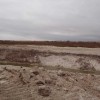 A critical nutrient for plant growth, phosphate helps sustain the world’s growing population. In 2010, seven mines in Florida produced approximately 10% of the world’s phosphate supply and more than 65% of the phosphate for the United States. But each year in Florida thousands of acres disturbed by strip-mining for phosphate rock must be reclaimed for other productive uses. This 11-page fact sheet provides a general characterization of the various soil types resulting from phosphate mine reclamation. Written by M. Wilson and E.A. Hanlon, and published by the UF Department of Soil and Water Science, October 2012.
A critical nutrient for plant growth, phosphate helps sustain the world’s growing population. In 2010, seven mines in Florida produced approximately 10% of the world’s phosphate supply and more than 65% of the phosphate for the United States. But each year in Florida thousands of acres disturbed by strip-mining for phosphate rock must be reclaimed for other productive uses. This 11-page fact sheet provides a general characterization of the various soil types resulting from phosphate mine reclamation. Written by M. Wilson and E.A. Hanlon, and published by the UF Department of Soil and Water Science, October 2012.
http://edis.ifas.ufl.edu/ss571
Category: Agriculture
Horn Fly Management (ENY288/IN952)
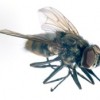 Horn flies are one of the livestock pests with the greatest impact on the health and productivity of cattle. Economic losses due to horn fly damage are estimated at $36 million annually in Florida alone. In the U.S.A. annual losses total between $700 million and $1 billion, with up to $60 million spent on insecticidal control. Horn fly damage is caused by blood feeding. The flies feed frequently and exclusively on blood, piercing the skin of cattle with their proboscis and taking around 20 small blood meals each day. Pain and irritation due to the constant presence of the flies and their bites causes defensive behavior in the cattle that prevents adequate food consumption and rest. This 4-page fact sheet was written by P. E. Kaufman and E. N. I. Weeks, and published by the UF Department of Entomology and Nematology, September 2012.
Horn flies are one of the livestock pests with the greatest impact on the health and productivity of cattle. Economic losses due to horn fly damage are estimated at $36 million annually in Florida alone. In the U.S.A. annual losses total between $700 million and $1 billion, with up to $60 million spent on insecticidal control. Horn fly damage is caused by blood feeding. The flies feed frequently and exclusively on blood, piercing the skin of cattle with their proboscis and taking around 20 small blood meals each day. Pain and irritation due to the constant presence of the flies and their bites causes defensive behavior in the cattle that prevents adequate food consumption and rest. This 4-page fact sheet was written by P. E. Kaufman and E. N. I. Weeks, and published by the UF Department of Entomology and Nematology, September 2012.
http://edis.ifas.ufl.edu/in952
Alternative Greenhouse Crops: Florida Greenhouse Vegetable Production Handbook, Vol 3 (HS791/CV272)
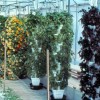 In 2012, it was estimated that 500 acres or more of all edible crops were being grown in some type of protected culture in Florida. This 13-page fact sheet discusses some of the alternative or specialty crops being grown and marketed. Written by R. Hochmuth and D. Cantliffe, and published by the UF Department of Horticultural Sciences, October 2012.
In 2012, it was estimated that 500 acres or more of all edible crops were being grown in some type of protected culture in Florida. This 13-page fact sheet discusses some of the alternative or specialty crops being grown and marketed. Written by R. Hochmuth and D. Cantliffe, and published by the UF Department of Horticultural Sciences, October 2012.
http://edis.ifas.ufl.edu/cv272
Fortunella spp., Kumquat (FOR300/FR368)
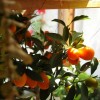 Many people find kumquat trees attractive and useful yard specimens. Their dark green leaves and contrasting bright orange fruits give them ornamental quality, and their relatively small size makes them easy to care for once they’re established. Because kumquats generally require less care than other citrus trees, they may be a good choice for gardeners with less time or experience, but who still desire an attractive and tasty citrus tree. If space is an issue, kumquats also do well in containers as long as they receive proper sunlight and watering. This 2-page fact sheet was written by Michael G. Andreu, Melissa H. Friedman, and Robert J. Northrop, and published by the UF Department of School of Forest Resources and Conservation, July 2012.
Many people find kumquat trees attractive and useful yard specimens. Their dark green leaves and contrasting bright orange fruits give them ornamental quality, and their relatively small size makes them easy to care for once they’re established. Because kumquats generally require less care than other citrus trees, they may be a good choice for gardeners with less time or experience, but who still desire an attractive and tasty citrus tree. If space is an issue, kumquats also do well in containers as long as they receive proper sunlight and watering. This 2-page fact sheet was written by Michael G. Andreu, Melissa H. Friedman, and Robert J. Northrop, and published by the UF Department of School of Forest Resources and Conservation, July 2012.
http://edis.ifas.ufl.edu/fr368
Pesticide Safety Miniposter: Pest Control Vehicle Safety (ENY2013/IN963)
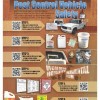 Do you need to train your employees about vehicle safety while transporting pesticides? This poster introduces safety concepts when transporting pesticides on a vehicle and alerts new pest control technicians to the pest control vehicle regulations of the Florida Department of Agriculture. The poster has quick response (QR) codes linked to short, online videos that take the technicians though six steps of maintaining a safe and legal service vehicle. This poster will serve as a valuable training and refresher tool. Designed by R.W. Baldwin, S.K. Hill, Philip Koehler, P.A. Mitola, and J.C. Medley, and published by the UF Department of Entomology and Nematology, August 2012.
Do you need to train your employees about vehicle safety while transporting pesticides? This poster introduces safety concepts when transporting pesticides on a vehicle and alerts new pest control technicians to the pest control vehicle regulations of the Florida Department of Agriculture. The poster has quick response (QR) codes linked to short, online videos that take the technicians though six steps of maintaining a safe and legal service vehicle. This poster will serve as a valuable training and refresher tool. Designed by R.W. Baldwin, S.K. Hill, Philip Koehler, P.A. Mitola, and J.C. Medley, and published by the UF Department of Entomology and Nematology, August 2012.
http://edis.ifas.ufl.edu/in963
Salmonella and Pathogenic E. coli in the Crop Production Environment: Potential Sources, Survival, and Management (SL375/SS576)
 Over the last two decades, at least a dozen major outbreaks of gastroenteritis caused by non-typhoidal Salmonella or enterovirulent E. coli have been linked to the consumption of sprouts, nuts, and fresh (or minimally processed) fruits and vegetables. These outbreaks caught scientists and the public off guard because these pathogens were not previously considered “plant-associated.” This 3-page fact sheet highlights recent discoveries that focus on the ecology of human pathogens in the crop production environment. A better understanding of how pathogens persist outside of animal hosts in agricultural water, soils, and plants will have major impacts on managing produce safety from “farm to fork.” Written by Max Teplitski, Andree George, and George Hochmuth, and published by the UF Department of Soil and Water Science, October 2012.
Over the last two decades, at least a dozen major outbreaks of gastroenteritis caused by non-typhoidal Salmonella or enterovirulent E. coli have been linked to the consumption of sprouts, nuts, and fresh (or minimally processed) fruits and vegetables. These outbreaks caught scientists and the public off guard because these pathogens were not previously considered “plant-associated.” This 3-page fact sheet highlights recent discoveries that focus on the ecology of human pathogens in the crop production environment. A better understanding of how pathogens persist outside of animal hosts in agricultural water, soils, and plants will have major impacts on managing produce safety from “farm to fork.” Written by Max Teplitski, Andree George, and George Hochmuth, and published by the UF Department of Soil and Water Science, October 2012.
http://edis.ifas.ufl.edu/ss576
Pesticide Safety Miniposter: Pesticide Spill Control (ENY2011/IN961)
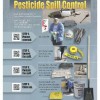 This poster acquaints new pest control technicians with proper procedures to manage an unscheduled pesticide release. The poster has quick response (QR) codes that direct a smartphone to online videos highlighting the steps of cleaning up a pesticide spill site, beginning with controlling the spill and ending with decontamination of the site. This poster will serve as a valuable training tool for new technicians and a refresher tool for pesticide applicators. Designed by R.W. Baldwin, S.K. Hill, Philip Koehler, P.A. Mitola, and J.C. Medley, and published by the UF Department of Entomology and Nematology, August 2012.
This poster acquaints new pest control technicians with proper procedures to manage an unscheduled pesticide release. The poster has quick response (QR) codes that direct a smartphone to online videos highlighting the steps of cleaning up a pesticide spill site, beginning with controlling the spill and ending with decontamination of the site. This poster will serve as a valuable training tool for new technicians and a refresher tool for pesticide applicators. Designed by R.W. Baldwin, S.K. Hill, Philip Koehler, P.A. Mitola, and J.C. Medley, and published by the UF Department of Entomology and Nematology, August 2012.
http://edis.ifas.ufl.edu/in961
Pesticide Safety Miniposter: Triple Rinse Steps (ENY2012/IN962)
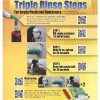 The Triple Rinse poster acquaints new pest management technicians to proper techniques to clean and dispose of empty pesticide containers. The poster uses quick response (QR) codes that direct smartphones to online videos that demonstrate the triple rinse process and container disposal. This poster will serve as a valuable training tool for new technicians and a refresher tool for pesticide applicators. Designed by R.W. Baldwin, S.K. Hill, Philip Koehler, W. Walker, and J.C. Medley, and published by the UF Department of Entomology and Nematology, 8. http://edis.ifas.ufl.edu/in962
The Triple Rinse poster acquaints new pest management technicians to proper techniques to clean and dispose of empty pesticide containers. The poster uses quick response (QR) codes that direct smartphones to online videos that demonstrate the triple rinse process and container disposal. This poster will serve as a valuable training tool for new technicians and a refresher tool for pesticide applicators. Designed by R.W. Baldwin, S.K. Hill, Philip Koehler, W. Walker, and J.C. Medley, and published by the UF Department of Entomology and Nematology, 8. http://edis.ifas.ufl.edu/in962
Florida Bears and Beekeeping (ENY105/AA133)
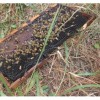 The Florida black bear (Ursus americanus floridanus) is a minor predator of beehives in Florida with the potential to cause major destruction. Large-scale urban and agricultural development inexorably reduces prime bear habitat each year. This habitat also contains excellent bee forage, and so bears and bees will sometimes come in contact, thus resulting in bear predation. This 4-page fact sheet was written by Malcolm T. Sanford and James D. Ellis, and published by the UF Department of Entomology and Nematology, August 2012.
The Florida black bear (Ursus americanus floridanus) is a minor predator of beehives in Florida with the potential to cause major destruction. Large-scale urban and agricultural development inexorably reduces prime bear habitat each year. This habitat also contains excellent bee forage, and so bears and bees will sometimes come in contact, thus resulting in bear predation. This 4-page fact sheet was written by Malcolm T. Sanford and James D. Ellis, and published by the UF Department of Entomology and Nematology, August 2012.
http://edis.ifas.ufl.edu/aa133
Bottling, Labeling and Selling Honey in Florida (ENY159/IN918)
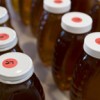 In 2011, the Florida Legislature enacted HB 7209 allowing individuals to manufacture, sell, and store certain types of “cottage foods”(including honey) in an unlicensed kitchen. “Cottage food operations,” as they are called, require no licensing or permitting from the Florida Department of Agriculture and Consumer Services and are not inspected by any other state government entity. This 4-page fact sheet was written by Nancy Gentry and James D. Ellis, and published by the UF Department of Entomology and Nematology, August 2012.
In 2011, the Florida Legislature enacted HB 7209 allowing individuals to manufacture, sell, and store certain types of “cottage foods”(including honey) in an unlicensed kitchen. “Cottage food operations,” as they are called, require no licensing or permitting from the Florida Department of Agriculture and Consumer Services and are not inspected by any other state government entity. This 4-page fact sheet was written by Nancy Gentry and James D. Ellis, and published by the UF Department of Entomology and Nematology, August 2012.
http://edis.ifas.ufl.edu/in918
The Costs of Managing an Urban Forest (FOR217/FR279)
 Urban forests provide benefits to society often referred to as ecosystem services: they improve human health, environmental quality, and local economies by increasing property values and aesthetics in communities. They help cities control storm water, reduce air pollution and energy costs, and offset carbon dioxide emissions. But urban forests also have “ecosystem disservices.” An accurate assessment of an urban forest’s costs can assist decision makers to better understand the role the forest plays in improving the well-being of the community. Identifying how funding is used can also help communities minimize costs and increase benefits. This 4-page fact sheet will review some of the types of costs associated with urban forests and present typical financial costs associated with urban forest management in the city of Gainesville, Florida. Written by Francisco Escobedo and Jennifer Seitz, and published by the UF Department of School of Forest Resources and Conservation, October 2012.
Urban forests provide benefits to society often referred to as ecosystem services: they improve human health, environmental quality, and local economies by increasing property values and aesthetics in communities. They help cities control storm water, reduce air pollution and energy costs, and offset carbon dioxide emissions. But urban forests also have “ecosystem disservices.” An accurate assessment of an urban forest’s costs can assist decision makers to better understand the role the forest plays in improving the well-being of the community. Identifying how funding is used can also help communities minimize costs and increase benefits. This 4-page fact sheet will review some of the types of costs associated with urban forests and present typical financial costs associated with urban forest management in the city of Gainesville, Florida. Written by Francisco Escobedo and Jennifer Seitz, and published by the UF Department of School of Forest Resources and Conservation, October 2012.
http://edis.ifas.ufl.edu/fr279
Carbon Sequestration in Grazing Land Ecosystems (SL373/SS574)
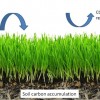 Native and improved pastures play an important role in sequestering carbon from the atmosphere. Because of the relatively high sequestration rates and extensive area, grazing land represents an important component of terrestrial carbon dioxide (CO2) offset and is a significant sink for long-term carbon sequestration and greenhouse gas mitigation. This 4-page fact sheet contains information for stakeholders, students, scientists, and environmental agencies interested in enhancing ecosystems services provided by grazing lands. Written by Maria Silveira, Ed Hanlon, Mariana Azenha, and Hiran M. da Silva, and published by the UF Department of Soil and Water Science, September 2012.
Native and improved pastures play an important role in sequestering carbon from the atmosphere. Because of the relatively high sequestration rates and extensive area, grazing land represents an important component of terrestrial carbon dioxide (CO2) offset and is a significant sink for long-term carbon sequestration and greenhouse gas mitigation. This 4-page fact sheet contains information for stakeholders, students, scientists, and environmental agencies interested in enhancing ecosystems services provided by grazing lands. Written by Maria Silveira, Ed Hanlon, Mariana Azenha, and Hiran M. da Silva, and published by the UF Department of Soil and Water Science, September 2012.
http://edis.ifas.ufl.edu/ss574
Self-Treatment Methods for Livestock–Backrubbers (ENY279/IG134)
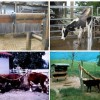 Back rubbers are a method of pesticide self-treatment for cattle. When bothered by insects or other pests, cattle tend to rub against objects. Backrubbers provide a rubbing surface that is treated with a pesticide. Cattle self-treat during rubbing, which reduces the number of flies, particularly horn flies, and parasites such as lice, on the animal. Backrubbers may be purchased commercially or constructed from easily available materials. A properly designed backrubber that supplies pesticide reliably to the animal can be a valuable addition to an integrated pest management program. This 4-page fact sheet was written by E. N. I. Weeks and P. E. Kaufman, and published by the UF Department of Entomology and Nematology, September 2012.
Back rubbers are a method of pesticide self-treatment for cattle. When bothered by insects or other pests, cattle tend to rub against objects. Backrubbers provide a rubbing surface that is treated with a pesticide. Cattle self-treat during rubbing, which reduces the number of flies, particularly horn flies, and parasites such as lice, on the animal. Backrubbers may be purchased commercially or constructed from easily available materials. A properly designed backrubber that supplies pesticide reliably to the animal can be a valuable addition to an integrated pest management program. This 4-page fact sheet was written by E. N. I. Weeks and P. E. Kaufman, and published by the UF Department of Entomology and Nematology, September 2012.
http://edis.ifas.ufl.edu/ig134
How to Report Pesticide Misuse in Florida (PI241)
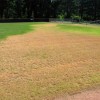 Pesticides provide benefits in many facets of daily life, including protecting food production and health, enhancing our recreational areas, maintaining our rights-of-way, and protecting wildlife, aquatic sites, and natural areas. However, misuse does occur and those who are negligent must take responsibility for their actions. This 3-page fact sheet was written by F. M. Fishel, and published by the UF Department of Agronomy, October 2012.
Pesticides provide benefits in many facets of daily life, including protecting food production and health, enhancing our recreational areas, maintaining our rights-of-way, and protecting wildlife, aquatic sites, and natural areas. However, misuse does occur and those who are negligent must take responsibility for their actions. This 3-page fact sheet was written by F. M. Fishel, and published by the UF Department of Agronomy, October 2012.
http://edis.ifas.ufl.edu/pi241
Pesticide Safety Miniposter: Pesticide Emergencies (ENY916/IN954)
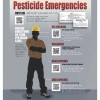 This poster introduces new pest control technicians to the general actions to be taken in the event of pesticide exposure. Technicians learn to recognize symptoms of exposure as they watch videos linked to the quick response (QR) codes on the poster. The videos detail general first aid steps to undertake until medical help arrives after a pesticide exposure. Designed by R.W. Baldwin, S.K. Hill, Philip Koehler, W. Walker, and J.C. Medley, and published by the UF Department of Entomology and Nematology, August 2012.
This poster introduces new pest control technicians to the general actions to be taken in the event of pesticide exposure. Technicians learn to recognize symptoms of exposure as they watch videos linked to the quick response (QR) codes on the poster. The videos detail general first aid steps to undertake until medical help arrives after a pesticide exposure. Designed by R.W. Baldwin, S.K. Hill, Philip Koehler, W. Walker, and J.C. Medley, and published by the UF Department of Entomology and Nematology, August 2012.
http://edis.ifas.ufl.edu/in954
Pesticide Safety Miniposter: Pesticide Formulations (ENY915/IN955)
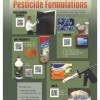 Do you need a quick training reference to common pesticide formulations? This poster introduces new pest control technicians to pesticide product formulations. The poster has quick response (QR) codes that link to videos showing example formulations of liquid pesticides, baits, pressurized aerosols, and a variety of dry product pesticides. Technicians need to be familiar with the products and formulations they are using, so this poster and its videos will be a useful training tool for pest management companies. Designed by R.W. Baldwin, S.K. Hill, Philip Koehler, P.A. Mitola, and J.C. Medley, and published by the UF Department of Entomology and Nematology, August 2012.
Do you need a quick training reference to common pesticide formulations? This poster introduces new pest control technicians to pesticide product formulations. The poster has quick response (QR) codes that link to videos showing example formulations of liquid pesticides, baits, pressurized aerosols, and a variety of dry product pesticides. Technicians need to be familiar with the products and formulations they are using, so this poster and its videos will be a useful training tool for pest management companies. Designed by R.W. Baldwin, S.K. Hill, Philip Koehler, P.A. Mitola, and J.C. Medley, and published by the UF Department of Entomology and Nematology, August 2012.
http://edis.ifas.ufl.edu/in955
Pesticide Safety Miniposter: Daily Personal Care (ENY917/IN956)
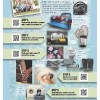 Anyone applying pesticides should be aware of the importance of preventing pesticide exposure to themselves, their families, and their pets by following a few personal care procedures each day. The information and video links (QR codes) on the Daily Personal Care poster provide technicians with examples of areas that are commonly contaminated by pesticides. The poster explains methods for the decontamination of vehicles, application equipment, personal items like cell phones, and clothing. Designed by R.W. Baldwin, S.K. Hill, Philip Koehler, W. Walker, and J.C. Medley, and published by the UF Department of Entomology and Nematology, August 2012.
Anyone applying pesticides should be aware of the importance of preventing pesticide exposure to themselves, their families, and their pets by following a few personal care procedures each day. The information and video links (QR codes) on the Daily Personal Care poster provide technicians with examples of areas that are commonly contaminated by pesticides. The poster explains methods for the decontamination of vehicles, application equipment, personal items like cell phones, and clothing. Designed by R.W. Baldwin, S.K. Hill, Philip Koehler, W. Walker, and J.C. Medley, and published by the UF Department of Entomology and Nematology, August 2012.
http://edis.ifas.ufl.edu/in956
Pesticide Safety Miniposter: Labels and Material Safety Data Sheets (MSDSs) (ENY918/IN958)
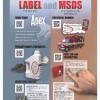 You have heard the phrase, “the label is the law.” Pest control technicians need to learn the components of a pesticide label and the information they can find on the Material Safety Data Sheet (MSDS). This poster acquaints new pest control technicians with the information they will find on pesticide labels and on MSDSs. The poster has quick response (QR) codes that direct smartphones to short, online videos explaining how to read pesticide labels and MSDSs. Designed by R.W. Baldwin, S.K. Hill, Philip Koehler, P.A. Mitola, and J.C. Medley, and published by the UF Department of Entomology and Nematology, August 2012.
You have heard the phrase, “the label is the law.” Pest control technicians need to learn the components of a pesticide label and the information they can find on the Material Safety Data Sheet (MSDS). This poster acquaints new pest control technicians with the information they will find on pesticide labels and on MSDSs. The poster has quick response (QR) codes that direct smartphones to short, online videos explaining how to read pesticide labels and MSDSs. Designed by R.W. Baldwin, S.K. Hill, Philip Koehler, P.A. Mitola, and J.C. Medley, and published by the UF Department of Entomology and Nematology, August 2012.
http://edis.ifas.ufl.edu/in958
Pesticide Safety Miniposter: Apply the Correct Amount (ENY919/IN959)
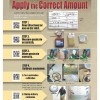 Pest managers must know the proper amount of pesticide product to apply. This poster acquaints new pest control technicians with the basic process of following label instructions to properly dilute pesticides, and it walks technicians through two types of basic equipment calibration. The poster has quick response (QR) codes that link smartphones to online videos illustrating each step in applying the correct amount of pesticides. Designed by R.W. Baldwin, S.K. Hill, Philip Koehler, W. Walker, and J.C. Medley, and published by the UF Department of Entomology and Nematology, August 2012.
Pest managers must know the proper amount of pesticide product to apply. This poster acquaints new pest control technicians with the basic process of following label instructions to properly dilute pesticides, and it walks technicians through two types of basic equipment calibration. The poster has quick response (QR) codes that link smartphones to online videos illustrating each step in applying the correct amount of pesticides. Designed by R.W. Baldwin, S.K. Hill, Philip Koehler, W. Walker, and J.C. Medley, and published by the UF Department of Entomology and Nematology, August 2012.
http://edis.ifas.ufl.edu/in959
Pesticide Safety Miniposter: Protecting Yourself (ENY2010/IN960)
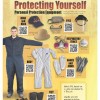 To properly apply pesticides, a technician must be aware of the personal protective equipment, or PPE, required for the application. This poster introduces new pest control technicians to different types of PPE they may be required to wear during a pesticide application or pest management inspection. There is a wide array of examples of PPE on the poster, with quick response (QR) codes that direct smartphones to short, online videos explaining PPE for each area of the body (head, eyes, face, mouth, hands and arms, torso and feet). This poster will serve as a valuable training tool for new technicians and a refresher tool for pest managers. Designed by R.W. Baldwin, S.K. Hill, Philip Koehler, W. Walker, and J.C. Medley, and published by the UF Department of Entomology and Nematology, August 2012.
To properly apply pesticides, a technician must be aware of the personal protective equipment, or PPE, required for the application. This poster introduces new pest control technicians to different types of PPE they may be required to wear during a pesticide application or pest management inspection. There is a wide array of examples of PPE on the poster, with quick response (QR) codes that direct smartphones to short, online videos explaining PPE for each area of the body (head, eyes, face, mouth, hands and arms, torso and feet). This poster will serve as a valuable training tool for new technicians and a refresher tool for pest managers. Designed by R.W. Baldwin, S.K. Hill, Philip Koehler, W. Walker, and J.C. Medley, and published by the UF Department of Entomology and Nematology, August 2012.
http://edis.ifas.ufl.edu/in960